Opinion
The Shed Is a Shiny Billionaire’s Box of Dreams. Can It Be an Important Cultural Center Too?
What the flashy new institution's merger of high-tech and social justice rhetoric means about culture now.
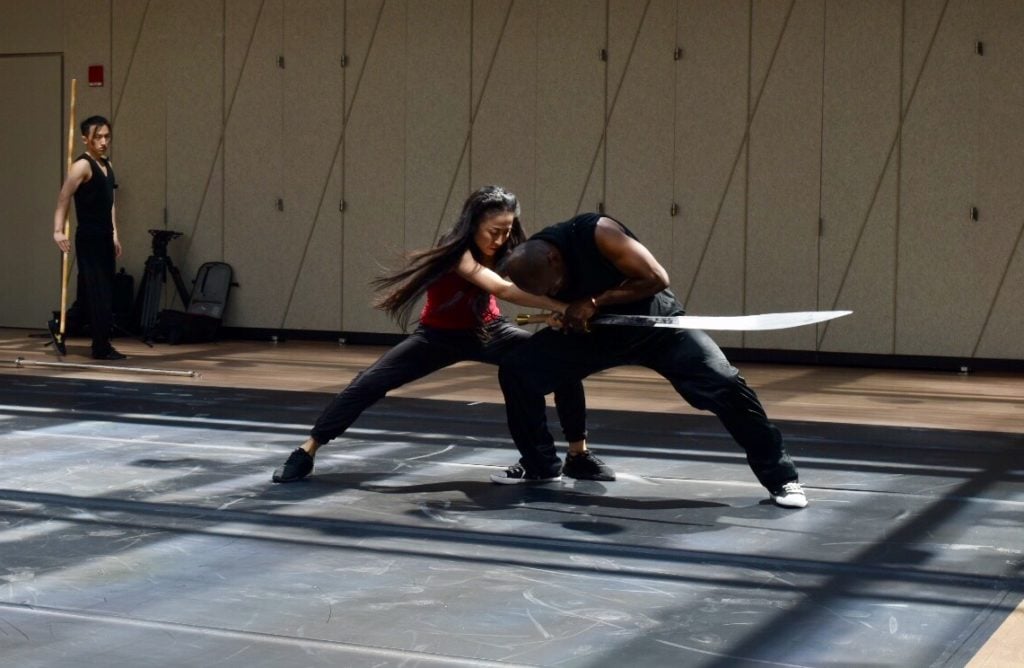
What the flashy new institution's merger of high-tech and social justice rhetoric means about culture now.

Ben Davis

The Shed, the brand-new, half-billion-dollar cultural institution opening on the West Side of Manhattan, is very, very lucky to have Alex Poots as its director. Poots is the person who managed to get the institution to change its name from its mortifying original moniker—“The Culture Shed”—to the shorter, hipper “The Shed,” which sounds like a rustic-themed Bushwick bar with $16 cocktails and the arcade game Big Buck Hunter.
Poots is also, by all accounts, the person who managed to give the nascent institution some real mission. From the outside, it always looked like the idea for the Shed was conjured out of the blind imperative to have something special to anchor the West Side’s new luxury mega-development, Hudson Yards, and little else but a cloud of words like “New!” “Different!” and “Popular!”
Poots was clever enough to turn that weakness into a strength: He made the lack of mission into a mission in and of itself. The Shed, he promises, is a new-model cultural institution, one for the era when the borders between fine art and pop culture, wavering since the ‘60s at least, have well and truly broken down—when the average audience member is assumed to be uninterested in little things like medium or tradition, and just wants access to whatever is New, Different, and Popular.
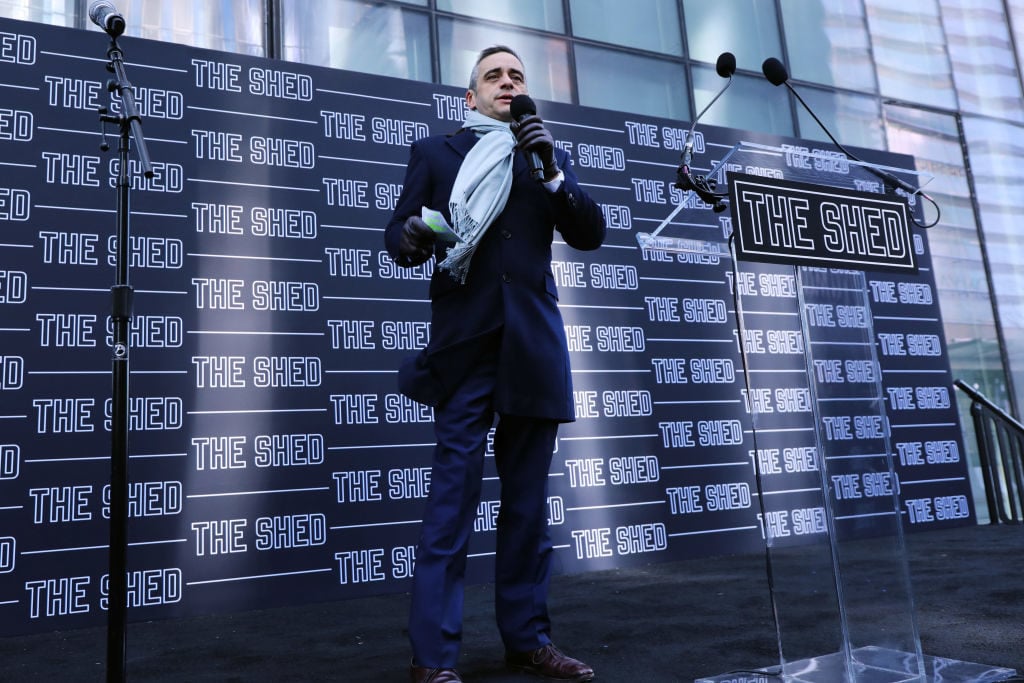
Artistic director and chief executive of The Shed, Alex Poots, speaks at a dedication ceremony for the new cultural space at Hudson Yards on April 01, 2019. Photo by Spencer Platt/Getty Images.
So now that it is at last opening to the public, what does this dream look like in practice? Let’s break it down into four parts.
Poots may have managed to save the new institution from the name “The Culture Shed.” But he has not stopped its main performance space—the massive concert bay formed by deploying the telescoping outer shell over a section of the surrounding plaza—from being named “The McCourt” after property developer and mega-donor Frank H. McCourt, Jr. This makes the Shed’s biggest venue sound a bit as if it is to a courtyard as a McMansion is to a mansion, or as a McRib is to meat.
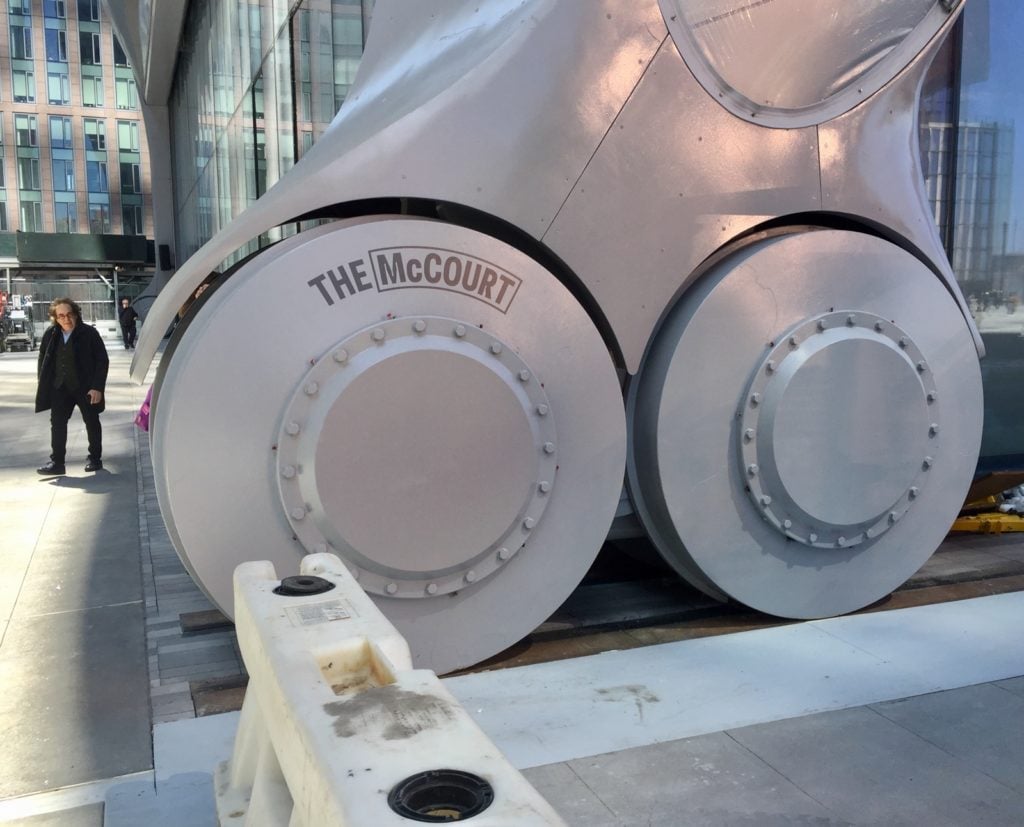
The wheels of The Shed’s telescoping shell. Image courtesy Ben Davis.
The association is mildly unfortunate, because once you get inside and get past its infrastructural bells and whistles, the Diller Scofidio + Renfro building does feel a little bit corporate and basic, not exactly grand or edgy.
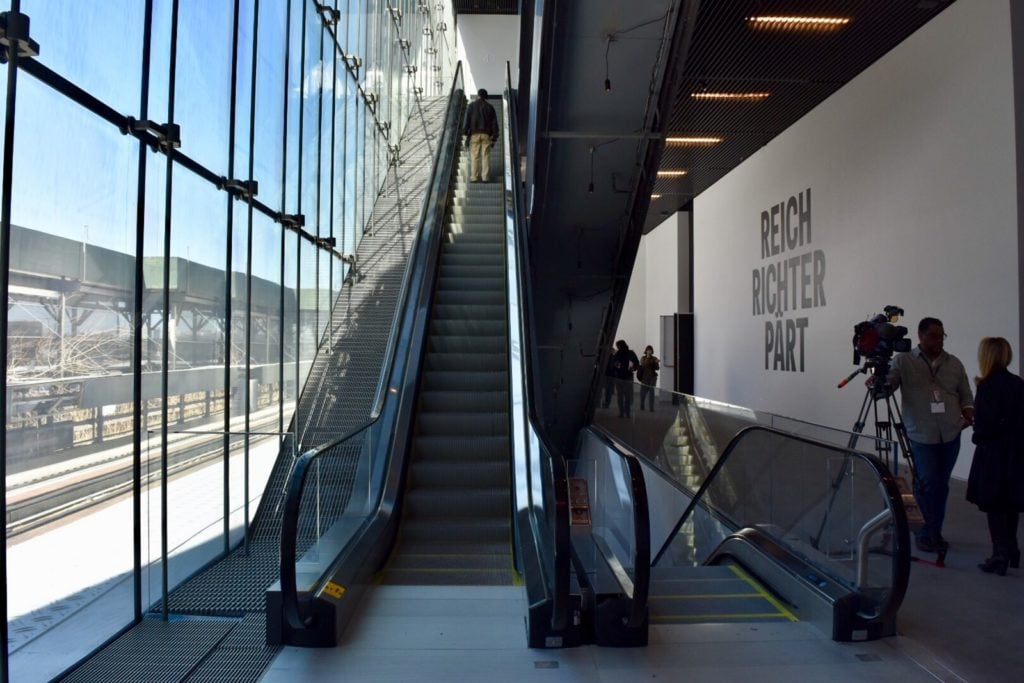
Inside The Shed. Image courtesy Ben Davis.
It has the typical poured concrete floors and perfectly ordinary, mall-like escalators shuttling you up and down its eight floors. There are areas, up on the level known as the “Tisch Skylights,” that make you feel like you are in a hotel lobby, and not even a nice hotel lobby.
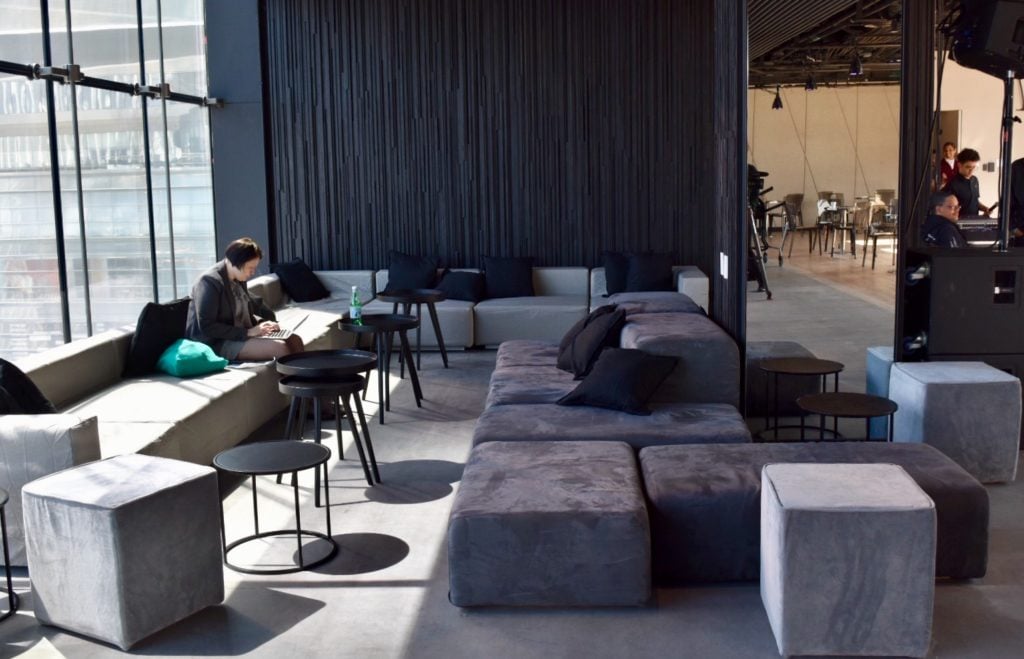
Lounge in the Tische Skylights level of The Shed. Image courtesy Ben Davis.
The innovations all focus on the building’s ability to reconfigure itself inside and out—how it can expand or contract to form a concert venue, and how the interior galleries and theaters can be reconfigured or opened up so that, say, the lecture theater overlooking the McCourt can be linked up with stepped seating on the ground floor to create a concert-hall-scaled performance venue.
Elizabeth Diller declared it “an architecture of infrastructure: all muscle and no fat.” Inside, it feels very much as if it is emphasizing the utilitarian aspects of its Swiss Army Knife architecture, and cutting against the association with decadent novelty.
How it all really works in practice, and what if any kinds of new productions it makes possible, we will soon see.
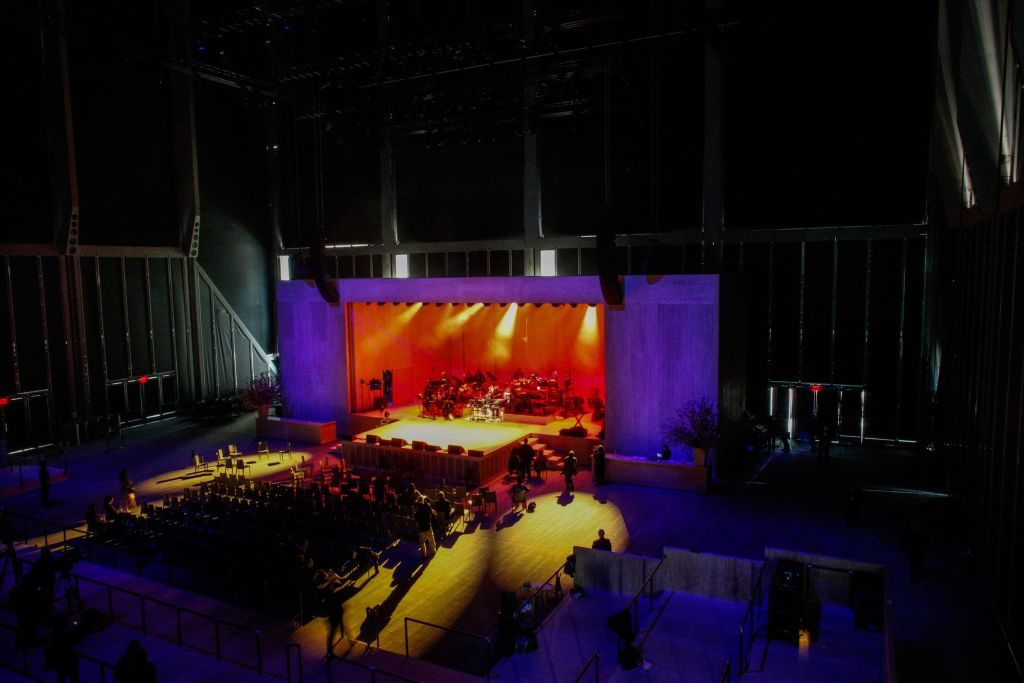
Members of the Soundtrack of America house band Rehearsal perform at the new arts center The Shed on the Hudson Yards on April 03, 2019 in New York City. Photo courtesy Kena Betancur/AFP/Getty Images.
The Shed opens with a flashy program of new commissions, an à la carte sampling of stars from all media, willfully blurring genres: Steve McQueen staging a concert series about the history of African American music with Quincy Jones; famed poet Anne Carson debuting a new production starring hot British actor Ben Whishaw and opera legend Renée Fleming; a “kung fu musical” with tunes by Sia; and painter Gerhard Richter teaming with minimalist music legend Steve Reich for an immersive choral installation, among other marquee fare.
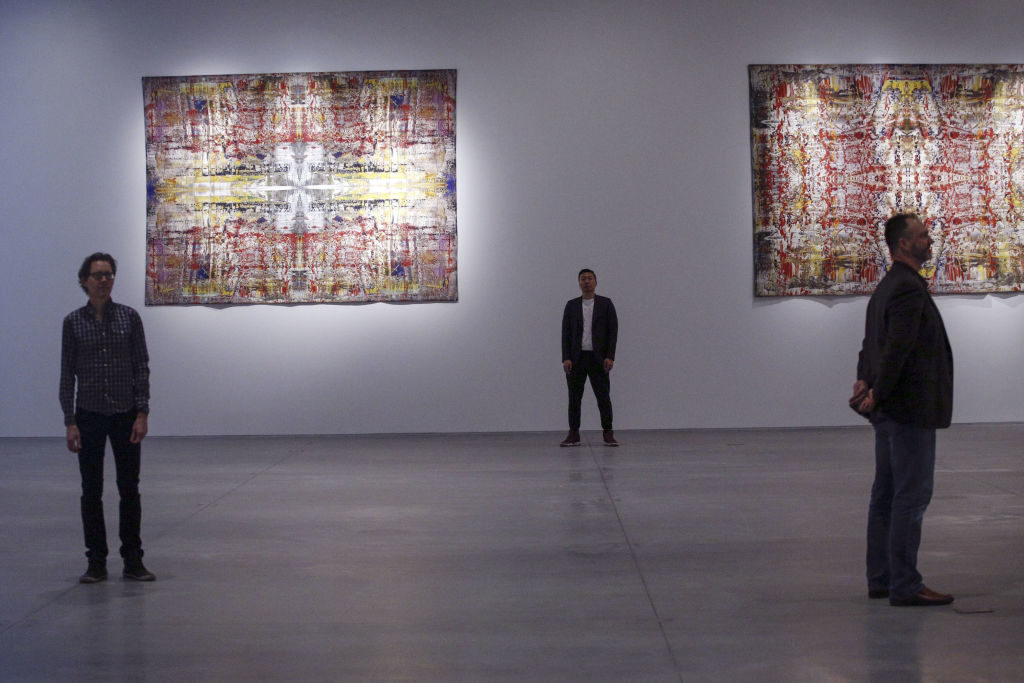
Members of the Choir of Trinity Wall Street attend a rehearsal at the Tisch Skylights inside the Shed at the Hudson Yards during a media preview on April 03, 2019 in New York City. Photo courtesy Kena Betancur/AFP/Getty Images.
The parade of donors and bigwigs who took to the stage in the McCourt yesterday to celebrate the Shed was not shy about touting this genre-blurring and embrace of the popular as putting New York’s other institutions in the dust: “Some of them tend to be about the past,” billionaire heir and patron Jonathan Tisch declared from the stage, “The Shed, once again, is about the future.”
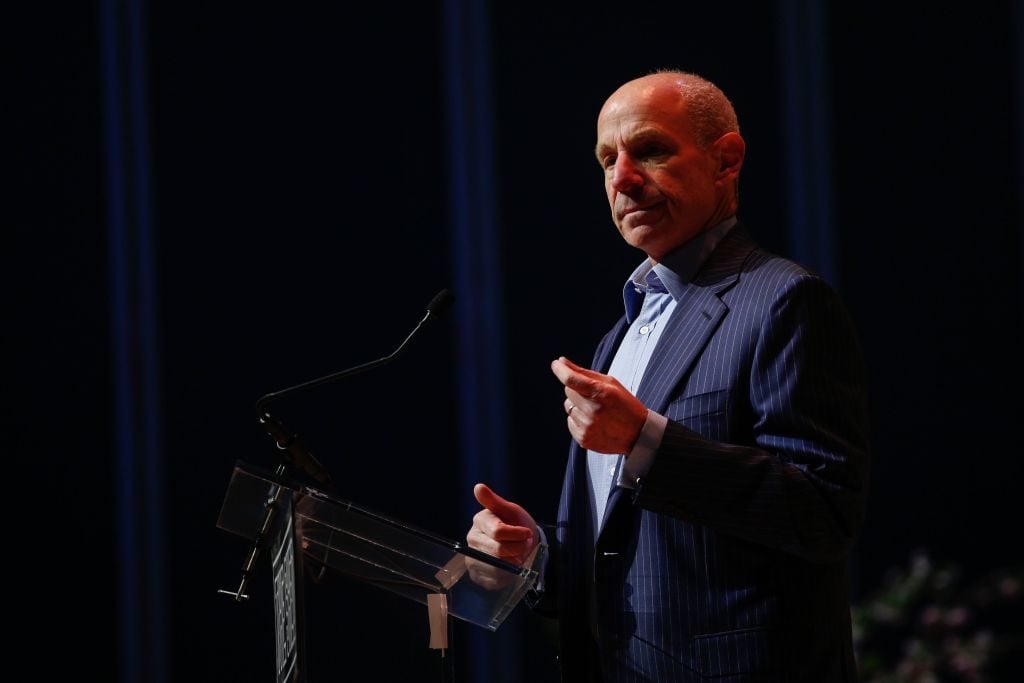
Jon Tisch, chairman emeritus of the United States Travel Association, speaks at the new arts center the Shed at the Hudson Yards during a media preview on April 03, 2019, in New York City. Photo courtesy Kena Betancur/AFP/Getty Images.
What was more striking, however, is how all the presenters seemed to have absorbed the rhetoric of social justice into their pitch for the Shed. The words “diverse,” “inclusive,” and “social impact” were repeated again and again. Co-architect David Rockwell even at one point declared that an institution with a “large and diverse audience has no better food partner than Danny Meyer.”
Frank McCourt, speaking from the McCourt stage and so, like Aquaman in the sea, a man feeling his own power, took things to a fever pitch. He declared the Shed to be the new frontier of exploring the “civic imagination,” a place for “ideas put into action to serve people, to better humanity,” to explore “human creativity for the greater good,” to inspire “social innovation.”
He sounded as if he wanted to be launching a movement, not a mixed-use arts venue: “In a world replete with cynicism, the Shed is an example of quite the opposite.” (To which my inner cynic responds, “so… it’s an example of naïveté?”)
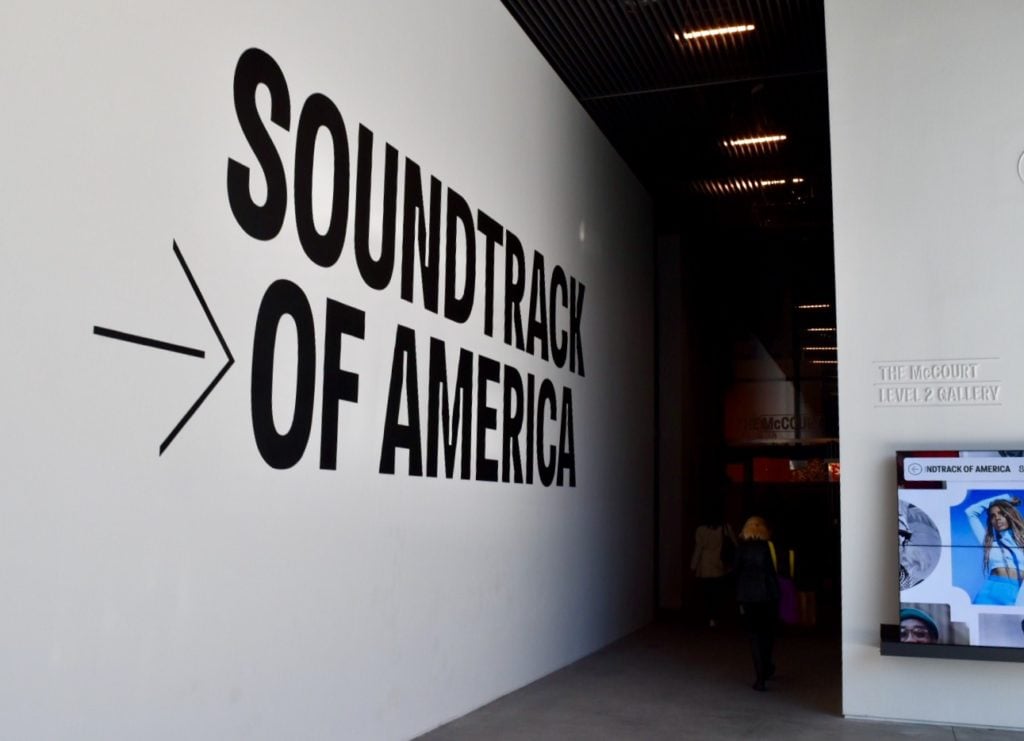
Entrance to the McCourt. Image courtesy Ben Davis.
There’s an interesting point here about what the Shed represents in terms of the contemporary evolution of what used to be called “bourgeois culture.” It once was that the elite defined itself as keepers of tradition, and went to the opera or theater as spaces that defined a culture of educated distinction.
The Shed Elite, seemingly, wants to be associated with values of innovation and experimentation instead of taste and connoisseurship; the future instead of the past. And it seems eager to compete for distinction not by paying allegiance to the Western Canon but by embracing the rhetoric of woke cosmopolitanism.
Believe it or not, though, you can be too cynical about all this. It’s one thing when the billionaires adopt this language in such a self-congratulatory way, and quite another for the actual staff of the place. It’s hard to judge from the outside, but Poots and Co. seem actually to be trying to walk the walk.
A funny thing about Poots is that, as he speaks, he seems almost to be both boasting about the Shed and apologizing for it at once, as if keenly aware at each moment of the potential objections and criticism: The Shed is for the celebrity-obsessed; the Shed is just a big trophy in search of a purpose; the Shed can’t help but be a symbol, just by dint of the forces that brought it into being, of the antiseptic new New York.
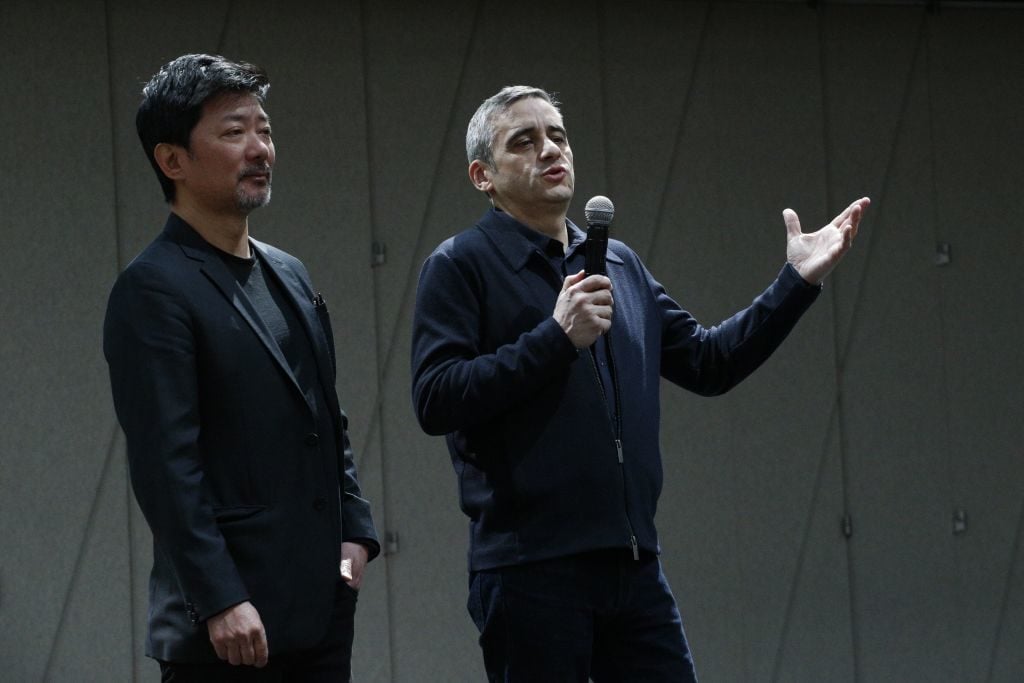
Alex Poots (right) speaks next to Chen Shi-Zenhg after the Dragon Spring Phoenix Rise rehearsal at the Tisch Skylights inside the new arts center the Shed. Photo by Kena Betancur/AFP/Getty Images.
When he says (to Town & Country no less), “I wanted the Shed to be part of the solution to the problem of gentrification,” that is a bit much to pretend to promise. But when he declared, at one point during the many panels on press day, “We’re privileged here, and we need to redistribute that privilege,” I don’t think it’s only rhetoric.
Tamara McCaw, the Shed’s chief civic program officer, talks persuasively about how what drew her to the project was Poots’s willingness to work some kind of real, non-celebrity-focused community engagement into the heart of the new institution’s mission.
There will be commissions and workspace for local artists, including a show of more than 50 selected from an open call. The Shed has reserved 10 percent of tickets for low-income New Yorkers (though just whether Hudson Yards’s luxury mall complex truly wants to embrace lots of low-income New Yorkers passing through is not clear).
Along with the more star-studded stuff, in May, the schedule features the likes of “POWERPLAY,” a “women-centered celebration of radical art and healing” targeted at 16- to 18-years-olds and featuring participants in the new institution’s “DIS OBEY” program of social-justice workshops with New York City students. The Shed’s schools outreach, McCall says, serves some 600 low-income kids in 20 schools and the New York City Housing Authority, with teaching artists helping them, through creativity, to voice the “issues they have within school, or at home.”
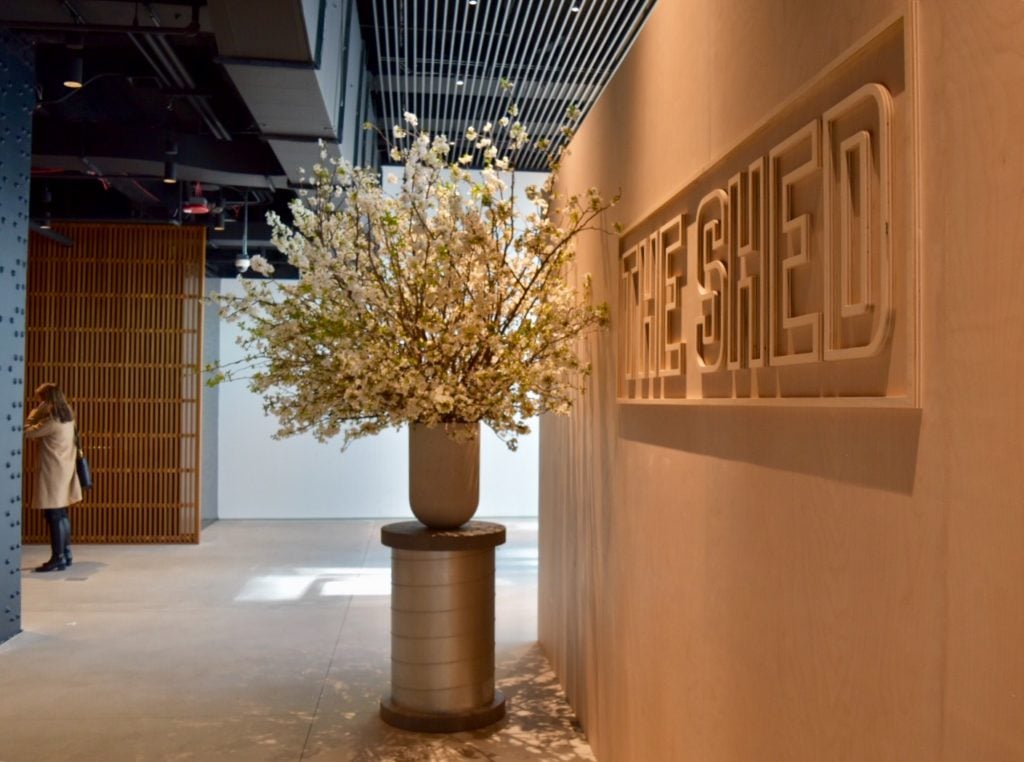
The logo of The Shed in the lobby. Image courtesy Ben Davis.
What I do find distasteful is the patrons patting themselves too much on the back about it all.
Because if you are a very rich person and are going to fund empowerment of diverse communities through an arts organization, I am not sure why you’d do it through a glittering brand-new one on the West Side, rather than through one of the thousands of local, culturally specific nonprofits dispersed across the city, which are starved for funding from both city and private donors in New York’s desperately asymmetrical, over-centralized landscape of mega-institutions and mega-donors. The Shed, both despite and because of its rhetoric of doing good, adds another ultra-extra-mega-institution to compete with for money and favor.
You could give to those littler, long-standing organizations—but then you wouldn’t get to meet Steve McQueen or Bjork or have your name on the cool Transformer building. Glamor is the price of trickle-down social justice.
As has been stated many times, when the Bloomberg administration hatched the idea for “The Culture Shed,” the brief was to do something to “keep New York on the cutting edge.” And it does that—within the limits of the way the task was framed.
The thing is, across the golden ages of culture in New York, those moments you associate with the deep wells of cultural cachet that have kept renewing the city’s vitality—whether Greenwich Village in its bohemian heyday or the hard-pressed Bronx in the heady early era of hip-hop—tend not to be associated with pricey arts institutions, but just the opposite. They tend to come at those points where creativity is not under the direct pressure of the real estate and luxury economies (for good or bad reasons), unleashing a wave of energy and cultural mixing, making experimentation possible and necessary for large numbers of people.
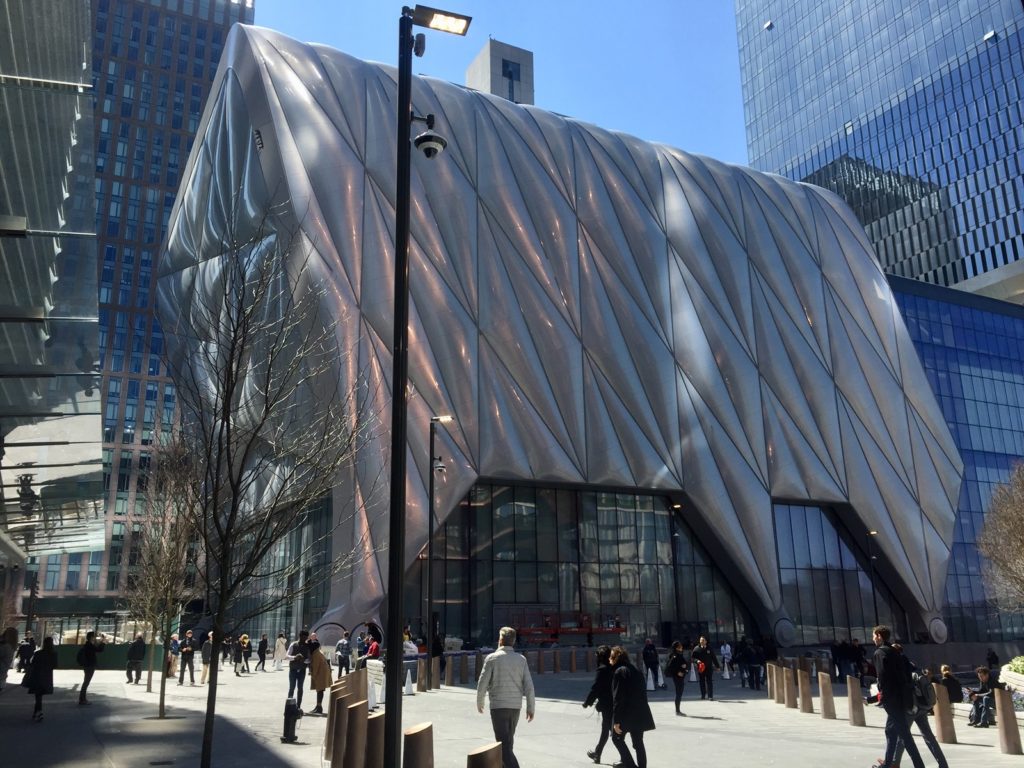
The Shed’s Bloomberg Building. Image courtesy Ben Davis.
But Bloomberg was famously and explicitly committed to selling New York as a luxury product. And so you got a technical fix to the problem of “keeping New York on the cutting edge” instead of a social and economic fix. Rather than some big program of affordability, you get the Shed.
It could be worse! There is a palpable self-consciousness about the need to earn a real place in the city’s cultural life that pulses beneath the telescoping skin of this new institution—and it certainly didn’t have to be that way. It could have been much more oblivious.
It faces all the problems of mega-culture. Poots has opened it with programming that looks, on the whole, smart and thoughtful. When the next shiny thing inevitably arrives on New York’s mega-philanthropy scene for donors to get distracted by, you can imagine the Shed ending up getting dumber and more craven about its celebrity side as it tries to court fickle appetites. And of course its giant-sized experiments may not add up but merely exhaust the patience of admirers, and fall apart.
But that tiny kernel of angst is at least something. Some angst, some honesty about the situation, probably is the requirement to prevent this type of institution from merely hosting enticing, expensive spectacles and to instead make culture that might actually address the present, and matter beyond it.